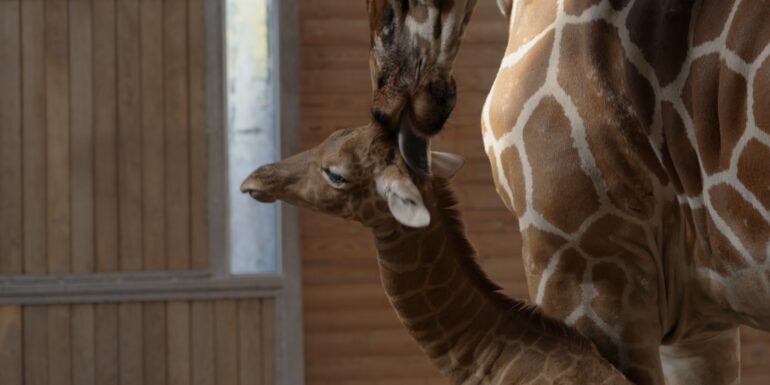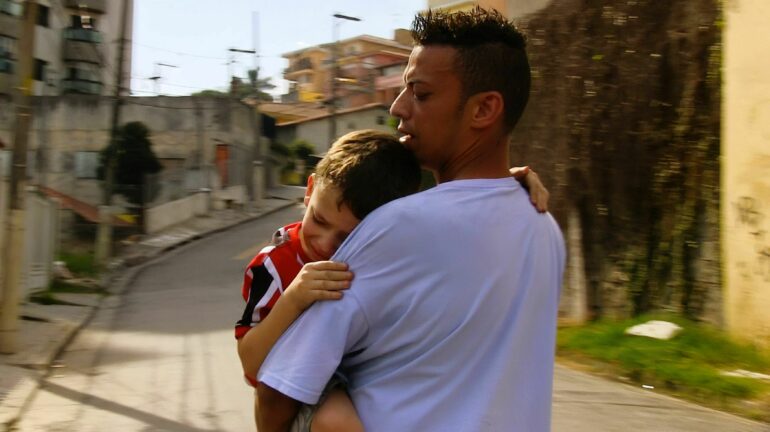WRITTEN BY: Davide Abbatescianni
Five films challenging reality will take part in the gathering’s DOX:Award competition, whilst three more will be showcased in the brand-new Human:Rights Award strand.
The DOX:Award competition of this year’s edition of CPH:DOX (13-24 March), one of the world’s largest cinematic gatherings celebrating non-fiction cinema, will host 5 Nordic productions out of 12 selected titles.
The Copenhagen fest opened on 12 March with the world premiere of Max Kestner’s Life and Other Problems (Livet og andre problemer), sold by DR Sales and a co-production between Denmark’s Bullitt Film, Sweden’s Plattform Produktion and the UK’s Hopscotch.
“The film features two main characters; a giraffe and a human. It deals with what we know today about the phenomenon of life, but it takes death as its starting point – namely, the killing of beloved giraffe Marius”, Kestner tells NFTVF. The other character is the director himself, who also serves as the narrator and embarks “on a desperate search for meaning in his own life in the wake of his children leaving him”. In Life and Other Problems, Max and Marius follow each other a short distance through life.
Kestner admits that one of his main goals was to deliver a “mainstream film”. “I’m aware it is a vague concept. But I understand it in two ways. First of all, everyone must be able to sit down and understand what’s going on. Next, it must be engaging. The latter was no problem, but the former was”.
“The film deals with significant scientific achievements, and it was difficult to figure out how to speak about them in a way that could be relatable. It is perhaps one of the film’s greatest values. It conveys heavy material in a light, funny and sometimes touching fashion”.
On 15 March, Sissel Morell Dargis attended the world premiere of Balomania. In it, a secret society of giant hot air balloon makers in Brazil’s favelas risk everything to create and fly their illegal masterpieces. The doc, produced by Denmark’s House of Real in association with Spain’s Northern Soul, is being sold by Cargo Film & Releasing.
“The balloon world in Brazil is a closed-knit community, mostly open to men. The main challenge was to figure out a way to be in it with enough trust to film them, and gaining enough respect to move around and not getting into trouble with the police... Possibly, the most uncomfortable challenge was when some people thought I was an undercover cop”, Morell Dargis reveals.
For the helmer, the whole doc centres on one’s sense of belonging and finding spirituality in today’s chaotic reality. “When I got to know the balloon world, it was like being Alice in Wonderland, but in real life. It was like experiencing magical realism in a Fightclub format. I come from a graffiti background where expressing yourself is, of course, the main purpose, but it’s often a lonely ride. In the end, it’s about seeing your name on the walls, on top of the craziest places. With balloons, you can’t really make any big ones alone. You need people, and you need to trust them”.
The article continues after the picture.
Another title sold by DR Sales, Håvard Bustnes’ Phantoms of the Sierra Madre premiered on 17 March. The picture, produced by Norway’s UpNorth Film, has been in the works for over seven years and the director defines it “probably the most difficult film” he has ever made.
The team faced “violent threats, heart attacks and the pandemic” but also received strong criticism for their position of European filmmakers making a film about American indigenous people.
“We considered ending the project several times but, fortunately, we’re very satisfied with the final result, and with the fact we’ve involved the former leader for Indigenous Film at Sundance, Bird Runningwater, as the executive producer. For me, premiering the film at CPH:DOX demonstrates we have succeeded in tackling all the challenges we’ve encountered along the way”.
“The film project began as a road movie, tracing the journey to find an Apache tribe. However, it evolved into a critical examination of documentaries wherein film crews travel to exotic locations, often depicting indigenous people in perceived ‘primitive’ manner. This self-critical film raises questions about the perpetuation of a tradition which colonial perspectives lead to condescending portrayals of indigenous cultures”.
Bustnes argues that the doc “explores whether there’s a right to engage in the Apache’s narrative and contemplates the idea of letting the Apache tell their own stories,” while delving into “the ethical considerations surrounding cultural representation and appropriation, without adopting a moralising tone and perspective”.
On 18 March, Virpi Suutari introduced her doc Once Upon a Time in a Forest, produced by Finland’s Euphoria Film. Sold by Autlook, the feature promises to be “an unconventional love song to forests, biodiversity and today’s radical, environmentally aware youth.”
“It’s been challenging to film the protagonists in nature, for example when they were doing their surveying activities. I had to figure out with my cinematographer Teemu Liakka how to follow them, without disturbing their work. And how to keep up with them because, sometimes, they were moving so fast”, Suutari tells us.
“They started to trust us quite early on. Teemu is interested in nature and they respected that, while my sound designer Pirkko Tiitinen was studying to become a nature surveyor at that time. Their presence has been crucial because I needed people who knew how to move in nature”.
Suutari also focused on distancing herself from the protagonists she was filming: “We spent so much time together, and they allowed me to join their private discussion groups. Sometimes, it was hard to draw the line, but I kept telling them: ‘To make this film as good as possible, I have to keep an outsider’s perspective’. I also consulted a law firm, because when you hear about something on the verge of being illegal, what are your responsibilities then? It was probably the most difficult film I’ve ever done, because they have such a clear goal. As a director, you certainly don’t want to betray it”.
On the same day, the Grand Teatret also hosted the world premiere of Jacob Perlmutter and Manon Ouimet’s Two Strangers Trying Not to Kill Each Other, produced by Denmark’s Final Cut for Real with Fremantle-owned label Undeniable (UK) and Louverture Films (USA).
The Danish fest catalogue bills the film sold by Cinetic as “a beautiful and often very funny film about an aging couple who, after an accident, face the inevitability of impermanence and seek a deep peace in their relationship while they still can”.
“Artistically, the process focused on finding a film language that felt in-line with Maggie and Joel as people and artists. The visual and sound language of the film was inspired by the protagonists and it was a journey of experimentation that we went on, until we found a language that felt right”, the directing duo explains.
“We followed our idea of making a documentary about their inspiring relationship”, they continue. “As an artist couple ourselves, we felt ‘symmetrical’ towards them, and this looked like an incredible starting point. The theme of mortality naturally emerged, and was dramatically underscored by an event during filming. We followed themes, not a story, as such. And these themes, we felt, were timeless and universal: a truth to which we can all relate through the lens of these two incredible people”.
This year, CPH:DOX has also launched a brand-new strand, in which ten titles will compete for the Human:Rights Award, worth €5,000 and handed out by the Danish Institute for Human Rights. The gathering will also host a dedicated exhibition taking visitors on “a journey from the adoption of the Universal Declaration of Human Rights, through time, across borders, continents and themes, to political diplomacy, activism and popular outcry”.
The Human:Rights Award section includes three titles with Nordic involvement. The first is Nanna Frank Møller and Zlatko Pranjic’s The Sky Above Zenica (Bosnia and Herzegovina/Denmark). Set in one of the world’s most polluted places, it zooms in on the inhabitants of the titular town northwest of Sarajevo, who embark on a brave fight for a viable future.
Next, Agnieszka Zwiefka’s Silent Trees (Poland/Germany/Denmark) centres on a 16-year-old Kurdish refugee girl, who is stranded in an icy pine forest between Belarus and Europe with her family in a dirty political power play.
Finally, Ellen Ugelstad’s The Recovery Channel (Norway) follows a filmmaker who creates a fictional TV channel to expose the injustices of modern psychiatric treatment.

